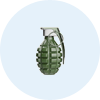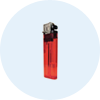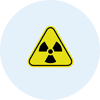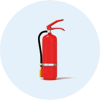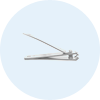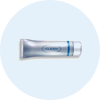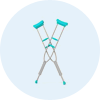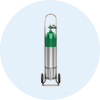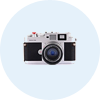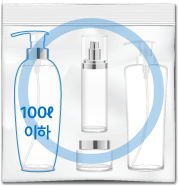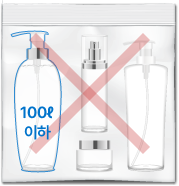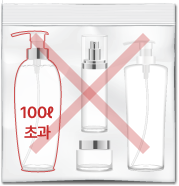Restricted Items
Major restricted items
The following standards apply to Korean airports, and if your destination is an international airport, be sure to check with the airline or travel agent for prohibited items in advance.
Restricted items other than the following are Please check through the Korea Transportation Safety Authority.
Explosive, flammable and toxic substances
Carry-on items X / Checked-in baggage X
- Explosives such as hand grenades, dynamite, gunpowder, smoke grenades, flares, firecrackers, landmines, detonators, fuses and blasting caps
- Matches, lighters, flammable gases such as butane gas, flammable liquids such as gasoline or paint and alcoholic beverages with 70% or higher alcohol content
(However, up to one each of small safety matches and portable lighters shall be allowed into the cabin)
Radioactive, infectious or toxic substances
- Chlorine, bleach, oxidizing agent, mercury, drain cleaning substances, toxins, radioactive isotopes for medical or commercial usage, infectious substances or biologically hazardous substances, etc.
Other hazardous substances
- Fire extinguisher, dry ice, tear gas
(However, up to 2.5 kg of dry ice per person may be allowed on board if it is packaged safely to facilitate the ventilation of carbon dioxide, and if approval is acquired from the airline)
General daily items or medical items
Carry-on items O / Checked-in baggage O
- Cutlery, nail clippers, long umbrellas, potato peelers, bottle openers, wine openers, tweezers, cuticle scissors, needles, compasses etc.
Personal hygiene products in liquid format · Bath products · Pharmaceutical products
- Skincare products, hair dye, hair perm liquids, bath products, toothpaste, contact lens products, anti-inflammatory products, medical alcohol for sterilization, oral dosages, ointments etc.
(However, on international flights, only products of up to 100ml are allowed inside the cabin. For checked-in baggage, up to 2kg(2ℓ) per person with each individual container being 500 ml in size or smaller is allowed)
Medical equipment and walking devices
- Injection needles, thermometers, portable electronic medical equipment such as automatic defibrillators, transplanted devices such as artificial pacemakers, canes, crutches, wheelchairs and strollers etc.
- If a mercury thermometer is safely stored in a protective case, it can be brought inside the cabin. Electric wheelchairs are only taken as checked-in baggage due to the risk posed by the battery
- Small oxygen container (up to 5kg), one pair of cylinders contained in a life jacket (a spare pair of cylinders is also allowed), rescue backpack in case of snow avalanches
(1 per person)
(However, the packaging of these items must meet the safety criteria and acquire approval from the airline)
Batteries and portable electronic devices
- Portable batteries, watches, calculators, cameras, video recorders, mobile phones, laptops, MP3 players etc.
Personal medication required for travel
-
Passengers must be able to present a doctor’s letter or prescription for prescription drugs.
Rules on the transport of lithium batteries
| Lithium Batteries |
|
Carry-on Baggage |
Checked-in Baggage |
|
Installed on devices |
Spare |
Installed on devices |
Spare |
| 100wh less |
5 per person |
5 per person |
5 per person |
Not allowed |
| 160wh less |
1 inTotal carry and checked |
2 per person |
1 inTotal carry and checked |
Not allowed |
| More than 160wh |
Not allowed |
-
(All riding devices operated by lithium batteries (e.g. air wheels, hover boards, electric bicycles, electric scooters, electric kickboards, electric skateboards etc.), regardless of the battery capacity
are prohibited from being taken on board either as carry-on items or as checked-in baggage.
-
How to calculate the capacity of the battery : Capacity(Wh) = Voltage(V) X Current(Ah), 1Ah=1,000mAh
Criteria for liquids brought into the cabin on international flights
-
Liquids, sprays or gels (creams) such as water, beverages, foods, skincare products must be in individual containers of up to 100ml. Such containers must be placed inside a 1ℓ transparent plastic zipper bag. Only one such bag will be allowed per person to be brought inside the cabin
-
Infant’s food or medication shall be allowed only for the amount needed during the flight. However, for medication, proof of the need for such medication, such as a medical certificate and prescription letter, must be presented to the security agent.
-
Liquid food items such as gochujang/kimchi
-
Products must be in individual containers of up to 100ml. Such containers must be placed inside a 1ℓ transparent plastic zipper bag. Only one such bag will be allowed per person to be brought inside the cabin.
-
We recommend that these items be checked in. Given the nature of fermented foods, their volume is likely to expand during the flight. Take this into account and only pack up to 2/3 of the container.
E-cigarettes
| Criteria |
Carry-on baggage |
Checked-in baggage |
| E-cigarettes |
Allowed |
Not allowed |
-
Some countries prohibit these items from being brought inside the cabin as carry-on items.
Valuables
Valuables including currency, jewelry, cash, securities, samples, documents, and electronic devices
Note
-
Please do not bring these prohibited items on board as you may be subject to a prison sentence of two to five years or a fine of 20 million to 50 million won under Article 44 of the [Flight Security Act].
-
If prior approval from the airline is required, the quantity of the items allowed may be restricted or the transport of such items may be prohibited.
-
Foreign airlines may apply different rules and you may have the items confiscated during security checks at departure or during transit.
-
Passengers who purchased liquid items at duty free shops
-
Unless the STEB(Security Tamper Evident Bag) provided to you at the duty free shop contains the purchased item and the receipt, the item may be disposed of or confiscated.
-
Do not open the STEB before boarding your final flight to your destination.

